Designing the Future of Care: Insights from Rebecca Hunter on Creating Engaging and Supportive Environments
In this insightful conversation, we spoke with Rebecca Hunter, Founder of Rebecca Hartley Interiors, to explore her experience in designing care homes and how the sector is evolving. Since launching her company in 2011, Rebecca has specialized in creating thoughtfully designed environments for care settings, ensuring they meet both the practical and emotional needs of residents.
Luxury care homes now emphasise social interaction and wellbeing, with spaces such as activity rooms, cinemas, and wellness areas becoming standard to enhance resident engagement. Retirement villages are increasingly popular for offering a blend of independence and support, catering to a different lifestyle compared to traditional care homes. Additionally, designing for dementia care remains a key focus, with thoughtful use of colour, wayfinding, and furniture playing a critical role in improving the lives of those with dementia.
Rebecca shares her expertise on how design can positively impact care home environments, and the importance of adapting spaces to meet the unique needs of their residents.

Rebecca Hunter, Founder of Rebecca Hartley Interiors
Can you walk us through what we can expect to find in a luxury care home? What design elements and features distinguish these homes from standard care facilities?
Of course, in a luxury care home you would expect to see more facilities available to the people living there. Now there is a big emphasis to maximise each space and create as many opportunities as possible for the residents to thrive and engage. There is more focus on social interactions and wellbeing, with the aim being to live as fulfilled a life as possible and continue with the passions you had before going to the home. To enable these interactions, lifestyle rooms such as activity rooms, cinemas, hair salons and wellness/therapy rooms are now very popular.
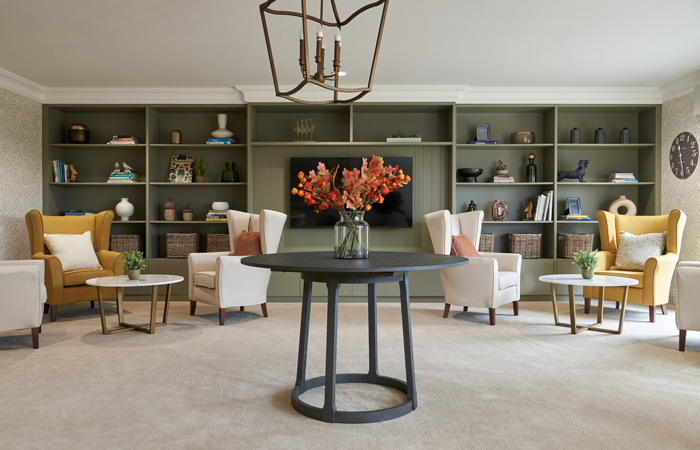
In recent years, there has been a trend for senior living to be incorporated into nursing and dementia care settings. Why is this trend no longer prevalent, and what factors have contributed to this shift?
I think that in more recent years retirement villages have become more popular because they offer freedom with safety and security. “Senior Living” has emerged as a lifestyle which is appealing at a time in your life when you are still active and want to live life to the full but with some support if required. They offer privacy within the comfort of your own home, which is hugely important.
There has been a shift between retirement living and care homes because the two offer very different living arrangements and levels of support. Now retirement villages are purpose built and offer amenities such as wellness centres with swimming pools, restaurants, and a concierge service, providing a healthy and busy lifestyle. Whilst care homes also provide many facilities they also have 24 hour care, which does mean that two are very different.
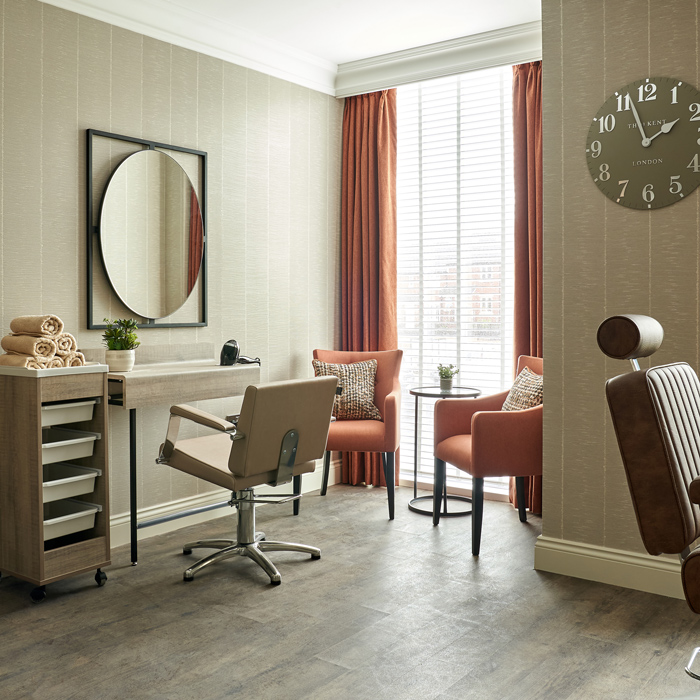
Have you seen care groups expand their offerings to include, albeit separately, nursing care settings and retirement villages? How do these separate models benefit the residents and the care providers?
Some care groups are beginning to explore retirement villages, though it remains a relatively new area for many. The model differs from the traditional care home approach, which is more familiar and often less costly to develop, so some providers are understandably cautious. However, retirement villages provide a unique offering, allowing residents to maintain their independence while still having access to support when needed.
How do you gather the data and feedback needed to inform the needs of the residents? Can you share any specific methods or tools you use to ensure the design meets their requirements?
We work closely with the care groups to continually understand their needs. Rather than formal data collection, our approach is more relationship-driven, ensuring we’re aligned with their goals and requirements. Their ongoing feedback is invaluable in shaping designs that are practical, functional, and ultimately feel like home for both residents and staff.
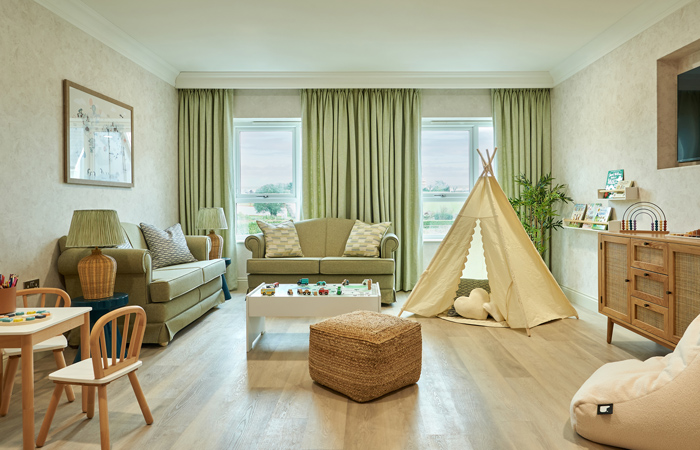
Spaces within the home have specific uses, so could you elaborate on the importance of leisure suites and grandchildren rooms, and how these spaces impact the lives of the residents?
These lifestyle rooms provide different forms of engagement for the people living in the homes. We have found that by providing a grandchildren’s room it creates a different level of interaction between the generations through play. Intergenerational socialising has been proven to improve social, physical and cognitive outcomes through laughing, smiling and being more active.
Leisure Suites or activity rooms are important as they are a hub of creative activity. Many activities happen in these rooms from baking to arts and bingo. Activities help maintain living skills and promote social interaction. They are designed to be multi-functional, which supports physical and cognitive well-being through various activities.
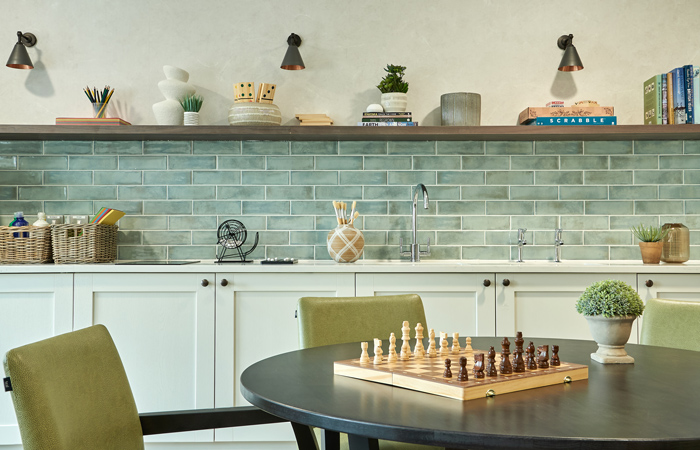
In what ways have you seen spaces change to welcome the community into the home, and why is community integration important, and what features are necessary in these spaces to make them effective?
Community integration is important for increased social interactions and to encourage the public into the homes. We have supported this by creating large open entrance spaces and creating hubs, where people can come in, visit and have food and drink in the bistro area. The hair salons and cinema rooms are also fully functioning and can be opened to the public.
Corridors are important spaces that you have been focusing on, so how are they utilized by residents, and how are you designing these spaces to meet their needs?
We have realised that people tend to congregate in corridors, there is more activity, and they can interact more in this space, so we are now designing corridors to encourage this. We put multiple seating areas into corridors, so that people can sit and watch what is happening around them and have conversations. Corridors are also especially important for dementia units, we integrate a lot of orientation pieces to help with wayfinding.
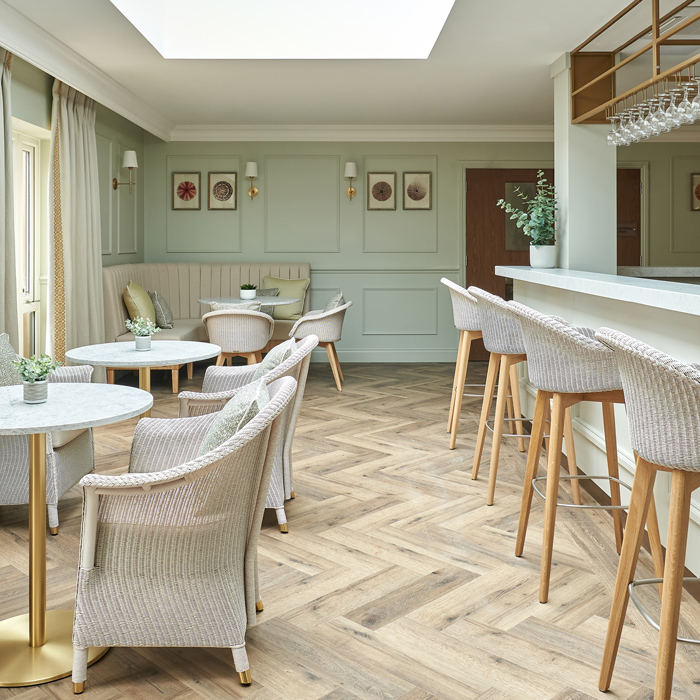
Besides new build care homes, you also work on care home refurbishments. Why is investment into existing care homes necessary to provide adequate settings, and what challenges do you face in these projects?
A refurbishment is an opportunity to elevate the communal areas and upgrade the facilities which encourage more social interactions, better furniture and a more welcoming cosy environment improves the physical and emotional well-being of the people living there. Upgrading the equipment and facilities gives a higher standard of care and makes them safer. This in turn attracts more residents and makes them more profitable. The main challenge is managing the works alongside a busy care home, as it needs to not be disruptive for the residents and must maintain a safe environment, this makes the process slower. However, once they are finished it is very satisfying to see the staff and people living there happy with their new home.
Design for dementia care is a growth area due to ongoing research, so in what ways is dementia care at the forefront of your mind, and can you provide examples of how you’ve incorporated it within your schemes?
As dementia design specialist, we pay particular attention to the sensory requirements of residents with dementia needs. According to studies, as dementia progress, the ability to see colour changes. People living with dementia usually experience difficulties with defining colour and sometimes have problems with perception. With this in mind we use contrasting colours for critical surfaces, for example, doors, floors, chairs and toilet seats, anything that needs to stand out.
We use specially design bedroom furniture for dementia residents, that helps them navigate finding their clothes, to encourage independence. All the upholstered furniture needs to be suitable for use and have hardwearing, washable and impervious fabrics on them.
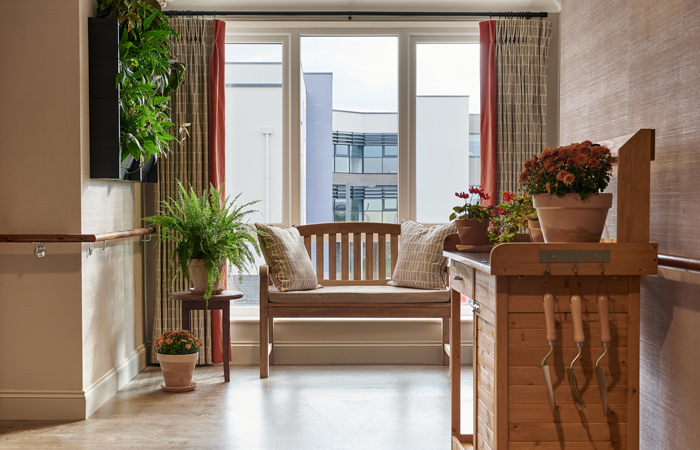
A massive part of designing for dementia is wayfinding, this usually happens in the corridors, giving cues as to where bedrooms, lounges, and bathrooms are for example. We try to encourage residents down corridors to lounges with garden access by using green walls outside the lounge space. Memorable items such as grandfather clocks or guitars are used in corridor spaces, to help a resident locate their bedroom.
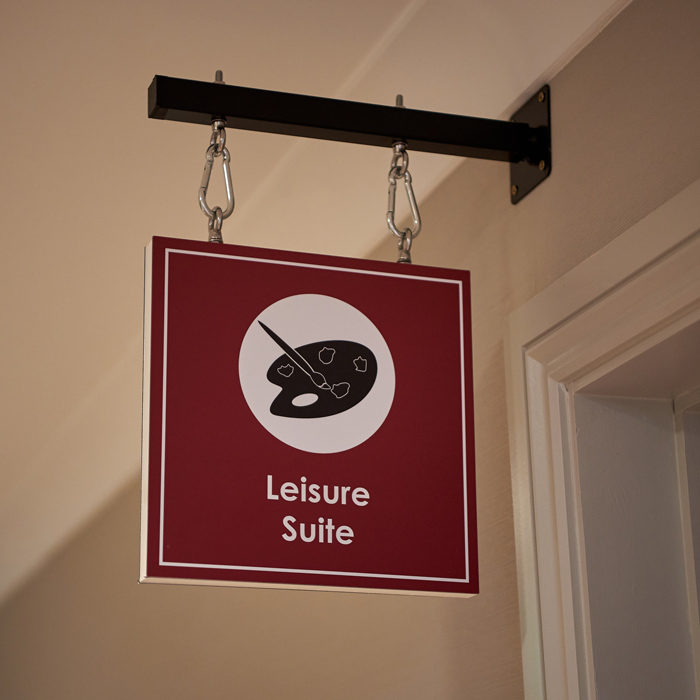
Finally, what do you envision for the future of design in the care sector? Are there any emerging trends or innovations that you are particularly excited about?
I think that the facilities for people living with dementia are going to see the biggest improvements, there are a few developments that have already been completed. The pioneers in this field are Hogeweyk in the Netherlands and Alzheimer’s Village in Dax France They both promote normal life for people living with severe dementia. The sites include a neighbourhood with a town square. There is a supermarket, hairdressers, theatre, pub, café-restaurant. Residents live together in houses based on similar lifestyles. The concept is to support unique needs, lifestyles and personal preferences.
We’re interested to see how technology and AI will help provide smarter and more effective care. The care industry has the potential to leverage AI and data to enhance care quality, and the innovative use of technology could transform how care is delivered.




